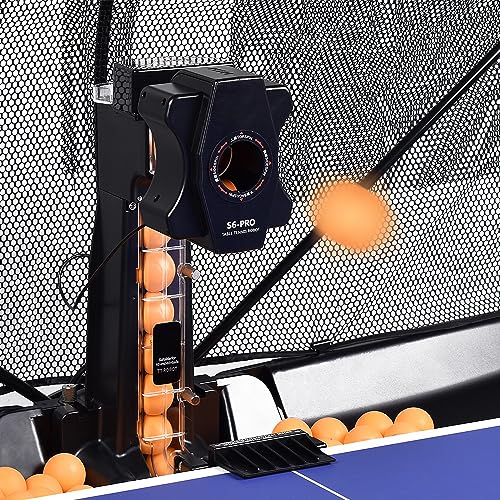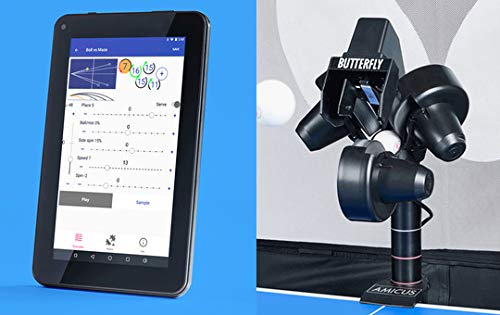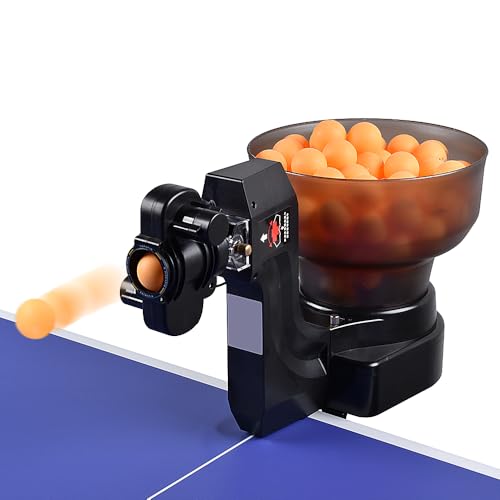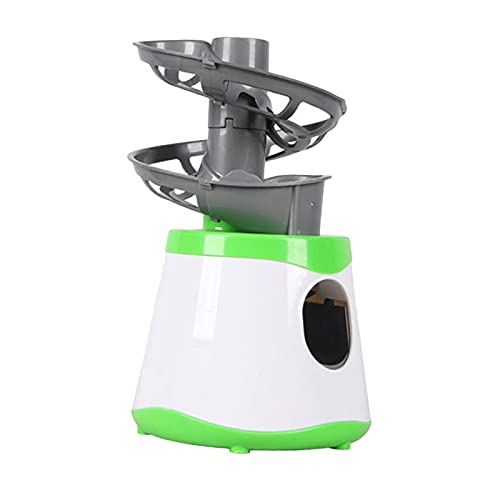Understanding the Basics of Table Tennis Robots: What They Do and Why They Matter
What is a Table Tennis Robot?
A table tennis robot is an automated device designed to shoot table tennis balls at various speeds, angles, and spin. Think of it as your virtual practice partner, eliminating the need for a fellow player while allowing you to train at your own pace. Whether you’re a beginner looking to improve your basics or an advanced player aiming to refine your strategy, these robots can simulate match-like scenarios, helping to develop your skills efficiently.
Why Choose a Table Tennis Robot?
Using a table tennis robot can significantly enhance your training experience. Unlike human partners, robots can offer an endless supply of balls, focusing solely on your development. You can practice specific shots repeatedly without interruption, making it easier to master techniques. Furthermore, robots can replicate different playing styles, so you can prepare for various opponents. This versatility makes them an excellent tool for solo practices or for individuals who may not have regular access to partners.
Key Features to Look for in a Table Tennis Robot: Making the Right Choice
Ball Frequency and Capacity
One essential feature to consider is the robot’s ability to deliver balls at a frequency that suits your training needs. Look for models that can vary their output, allowing you to select different speeds, from slow feeds for beginners to rapid fire for advanced drills. Additionally, check the robot’s ball capacity. A model that holds a substantial number of balls reduces the need for constant refills, letting you focus entirely on your practice.
Adjustable Angles and Spins
Another key feature is the robot’s ability to adjust ball angles and spins. Advanced models allow you to programme specific drills that mimic match conditions, including side spins and topspins. This functionality helps ensure that you encounter different styles, improving your reaction times and shot selection. For example, whereas a beginner might benefit from straight feeds, advanced players will appreciate the realistic challenges created by varied spins and angles.
Control and Programming Options
Control options vary by model. Some robots provide a remote control for instant adjustments during your practice session, while others can be programmed via mobile applications. The ease of programming your preferred drills is crucial; a user-friendly interface makes it possible to set up complex training sequences without frustration.
Build Quality and Portability
Quality construction is vital for durability, particularly if you intend to use your robot frequently. Many robots include robust casings and parts designed to withstand regular volleys. Portability can also impact your decision: lightweight models are easier to move and set up, but ensure they remain stable during operation.
Top Table Tennis Robot Models of 2023: A Quick Comparison
Robot A
Robot A impresses with its ability to shoot at 100 balls per minute, catering to advanced players looking for a challenge. It offers programmable features and can replicate various spins, making it a versatile training partner.
Robot B
Robot B is ideal for players at all skill levels, featuring adjustable intensity settings and a ball capacity of 150. It boasts a simple control interface and a sturdy build, ensuring reliability during practice.
Robot C
Robot C stands out with its mobile app control, allowing users to easily tailor their training sessions. Suitable for those needing to practice footwork and reaction times, it provides randomised shot patterns for added variety.
How to Set Up and Use Your Table Tennis Robot: Step-by-Step Guide
Unboxing and Initial Setup
Upon unboxing your table tennis robot, begin by checking all parts against the manual to ensure nothing is missing. Next, choose a stable, flat surface close to a power outlet. Most robots require assembling, so follow the guidelines to attach any necessary components securely.
Ball Loading and Connectivity
Once assembled, the next step is to load the balls into the hopper. Pour balls in carefully to avoid jams, ensuring the feeder is filled according to the manufacturer’s instructions. If your model connects to an app, follow the outlined steps to pair it with your smartphone or tablet.
Adjusting Settings for Optimal Practice
Before starting your session, take time to adjust the settings based on your training goals. Select your desired frequency, spin type, and angle. It’s helpful to start slowly and gradually increase complexity as you gain confidence with the robot’s capabilities.
Practice and Monitor Progress
As you practice, it’s essential to monitor your performance. Pay attention to your footwork and shot accuracy. Some robots track performance stats, which can provide insights for further development. Regular sessions and iterative adjustments help maximise your improvement.
Maximising Your Training: Tips and Drills with a Table Tennis Robot
Warm-Up Exercises
Begin your training with warm-up exercises aimed at increasing your reaction time. Set the robot to a slow feed and focus on gentle strokes, maintaining a rhythm to get into the flow. This can prevent injuries and prepare your body for more intense practice.
Targeted Drills
Incorporate targeted drills designed to strengthen specific areas of your game. Use the robot to practice services with various spins or to hone your forehand and backhand returns. Target specific areas of the table to improve your accuracy and control during matches.
Game Simulation
To better prepare for real matches, programme the robot to simulate an opponent’s playing style. Set it to vary speed and angles, challenging yourself to adapt quickly. This switch-up in practice can be invaluable for developing match strategies.
Feedback and Review
After each training session, take a few minutes to reflect on your performance. If your robot records data, analyse which areas need more focus. From shot selection to footwork, pinpointing these aspects will lead to more productive future sessions.






























